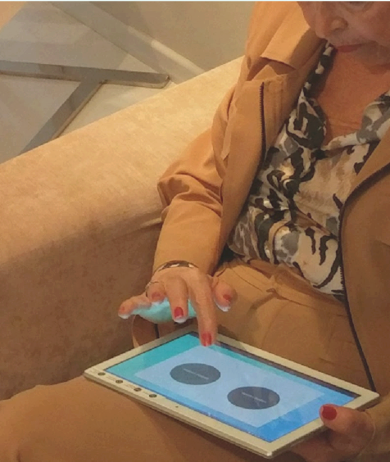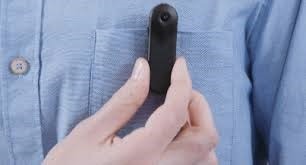Research Description
The Computational Neuropsychiatry Lab aims to bridge the gap between clinical practice and research, neurology, psychiatry, physics and psychology in order to re-formulate our understanding of the human self and its pathologies. We work with and for neurological and psychiatric patients in the department of neurology, neuropsychiatry clinic, invasive neurophysiological unit and in the operation room. We use state of the art computational methods applied directly on clinical data, particularly tailored to improve clinical management and scientific understanding of neuropsychiatric disorders. Our multidisciplinary team of medical doctors, physicists, computer scientists and psychologists perform electrophysiological and metabolic recordings in healthy subjects and neuropsychiatric patients. We perform sophisticated analyses and modeling in order to better understand the human "self" in health and disease.
Our lab facilities include fMRI, multi-channel EEG, intracranial EEG, virtual reality, and direct cortical stimulation. We are located within the Department of Neurology and have a close collaboration with the Departments of Psychiatry, Neuroradiology and Neurosurgery, enabling us to investigate and help patients in real-time. We develop approaches to address the specific medical needs of neuropsychiatric patients and clinicians. Our main interests involve cortex-related functional conditions including epilepsy, neurodegenerative diseases, conversive and dissociative disorders, amnesias, disorientation states and different cognitive disturbances and misperceptions. By combining direct clinical involvement and cutting-edge computational methods we are able to challenge the customary context of the human “self” and to reframe neuropsychiatry, and at the same time to develop effective patient-tailored clinical tools.
Research Projects
|
Orientation is defined as tuning between oneself and the internal representation she forms of the surrounding world: places around, life events and people she encounters. Does the same system underlying orientation in the different domains? How the dialogue between the represented self and the experiencing-self is managed? Does close people, important events and notable places are represented differently than distant ones? How is time represented in the life-time scale? Do we have “mental maps” to these processes and are they unique for each domains or pa part of a multidimensional manifold? And how are errors in these processes may be detected and corrected? To answer these and related questions we developed a bot that extracts the patient’s own environment and translates it to a real-world yet controlled experimental settings. By relying on novel technologies in virtual-reality and functional neuroimaging we are able to detect the characteristics, footprints of “mental maps” and brain-networks underlying orientation. Computational models are used to simulate different predictions and test them with respect to a mass real-world measurements and neuroimaging results.
|

|
|
|
Alzheimer's disease insert text |
insert image | |
|
Cognition As humans we can recall our last vacation and imagine our next one. We can simulate our way back home from work and understand other people by taking into mind their personal perspective. Accumulating evidence suggests that these capacities, in which one can mentally self-project herself to different points in time and space and can conceive the viewpoint of others, rely on the same core brain network. Yet human experiences are not just spatially and temporally situated, but are also characterized by higher cognitive characteristics, like their aesthetic framework, moral level or political context. Moreover, recent evidence shows that the neural machinery dedicated to the computation of cognitive maps supports a systematic organization of knowledge across multiple abstract domains other than space. This led us to ask whether the neural mechanisms supporting our ability to represent ourselves in different self-locations extend beyond the spatial, temporal and social domains? We propose that the brain system dedicated to self-projection may serve as a modular framework for other “higher” cognitive domains – such as moral, political and religious representations. By means of behavioral and functional neuroimaging studies we investigate this hypothesis, with special interest in its relevance to clinical symptoms seen in various brain disorders. |
insert image | |
|
People Human beings are social creatures. Our lab is interested in mental representation of the different people in our life, the roles they play and our relationships with them. What are the cognitive functions that underlie our social behavior, and how are they organized in our brain? Do we have a social cognitive map that supports our social functions? What are the neural correlations of different roles in our life, and how do they shape our view of the world around us? What happens when we adopt a point of view of another person, and how does this process differ when that person is your husband, your friend or your president? And do this change of point of view in the person domain share common mechanisms with other domains? We developed multiple functional neuroimaging paradigms to shed light on these subjects. Using data from social networks, we create stimuli that are individual for each participant and allow them to navigate in their own social world, use points of view of other people and places in their life, and complete different social tasks. In another experiment, we use fictional characters from known films to define the significance of different prototypical roles in our view of the world.
|
insert image | |
|
Body insert text |
insert image | |
|
Tools Clara Clara is a personalized, highly sensitive digital screening tool we have developed to identify early stage mild cognitive impairment. Dementia is the fastest growing major cause of disability globally, and early detection is crucial in changing its trajectory – With the current delayed diagnosis, the impact of the existing caring tools is low, and the ability to develop new therapies is limited. The existing cognitive screening methods available today for Alzheimer's disease do not identify individuals early enough, and they are expensive, inaccurate, time consuming and anxiety provoking. How can we challenge the current approach for understanding Alzheimer? We now realize that the big tragedy of Alzheimer is not limited to simple memory loss, but is about losing your personhood and your ability to mentally map the people, events and places that form your life and identity. Clara is a highly engaging, predictive and data driven chat app, that uses self-referenced estimations of people, events and places to easily and precisely identify early stage mild cognitive impairment, through remote screening and ongoing monitoring. The scientific foundation is based on the activation of the orientation neural network, identified in our published research as overlapping the regions affected in Alzheimer's disease. We have developed app versions for web, Android, iOS, and an admin back office, which enables physicians, as well as nurses, social workers and neuropsychologists, to run the assessment and continuously track and monitor its results.
MyMe Personal relations take a major part in one’s life, and are extensively represented in the human brain. We have already demonstrated in our lab that orientation to other persons takes the major part of the orientation brain system, more than orientation to locations or events. How can we measure personal relations then? And how can we use such measures for self-assessment – and potentially self-improvement – of our social functioning and interpersonal dynamics? In previous studies we have used a most basic measurement for orientation to person – that of cognitive distance (“to whom do you feel closer”). Now we propose to measure social interactions and interpersonal closeness in a much more ecological manner – using quantifications of one’s voice properties during real-time conversations, using the newly introduced MyMe wearable technology by OrCam. We further intend to use this data to improve one’s social functioning through self-monitoring of social behavior and dynamics using MyMe voice analyses.
|
|


